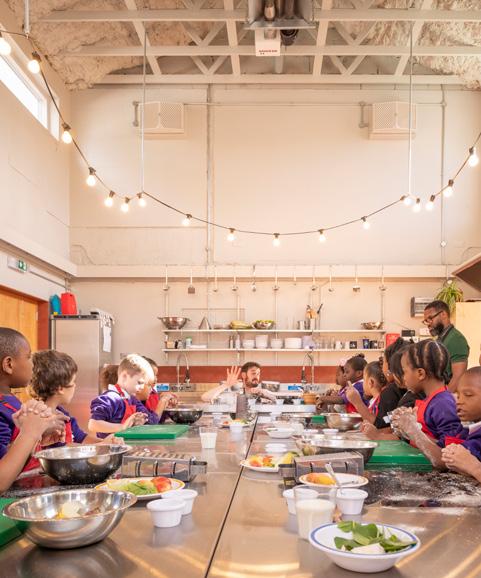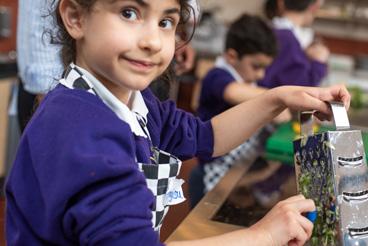
2 minute read
8.2 KEY STAGE 1 EXAMPLE CURRICULUM
YEARS 1 & 2 LEARNING OBJECTIVES
• Simple, small knife skills –cutting, peeling, grating.
Advertisement
• Following simple recipes.
•
Example Of Lessons
• Lesson A – 2 hours
1. 1. Cheese & Spinach
2. Wholemeal Scones.
3. 2. Apple & Carrot Coleslaw.
•
• Simple preparation techniques – measuring, mixing.
• Identifying fruits & vegetables.
• Nutrition – portion size, ‘5-a-Day’, ‘Eat the Rainbow’.
•
4. 3. Fruit Salad.
• Lesson B – 2 hours
1. 1. Sweet Potato Muffins.
2. 2. Crunchy Garden Salad.
3. 3. Baked Fruit.
• What happens to ingredients when they are cooked?
Key Stage 1 Course Description
• Key Stage 1 lessons introduce crucial kitchen tools in food preparation, learning how to safely handle small knives, peelers and graters correctly to transform raw ingredients into fresh salads.
• We cover how to follow simple recipes by breaking down the stages in easy-to-follow segments. Using techniques such as simple measuring and mixing, we create nutritious savoury bites, such as wholemeal cheese scones or sweet potato savoury muffins.
We identify different fruits and vegetables, begin to understand portion sizes and the importance of the ‘5 a Day’ and ‘Eat the Rainbow’ nutritional messages. This opportunity is used to explore different tastes of similar ingredients. It also acts as an introduction into what happens when we bake.

A.M. P.M.
07.00 — Tom, our Head Food Educator, arrives and checks booking information for the day.
Tom checks if the kitchen is ready for use, fills in the food diary and deals with deliveries. Tom then sets up the class, measures out ingredients and lays out equipment.
09.45 — The class arrives and gets ready, washing their hands, aprons on and name tags.
10.00 — The cookery session begins, 2 to 3 recipes will be covered.
12.00 — The morning session ends. If it was a half-day session, the food is boxed up and the class takes it home.
If it’s a four hour (full day) session, the class eats lunch and takes a break. Tom and any helpers clean away and lay out the equipment for the afternoon.
13.00 — The afternoon session begins – either the same students or a new group for another halfday booking. Cooking begins –another 1 or 2 recipes – or the class goes outside and learns about the gardens, plants seeds, checks on chickens and the bees or harvests produce.
14.30 — Full Day Session ends / 15.00 half day booking ends. Aprons are handed back, hands washed and the food is boxed up and taken away. Tom then cleans down the worktops, sweeps and mops the floor. All equipment is put away.
16.00 — This is Tom’s admin time, he checks bookings for the next day, responds to any emails that have come in, processes invoices and places any orders.
Tom completes the food diary for the day and goes home.









